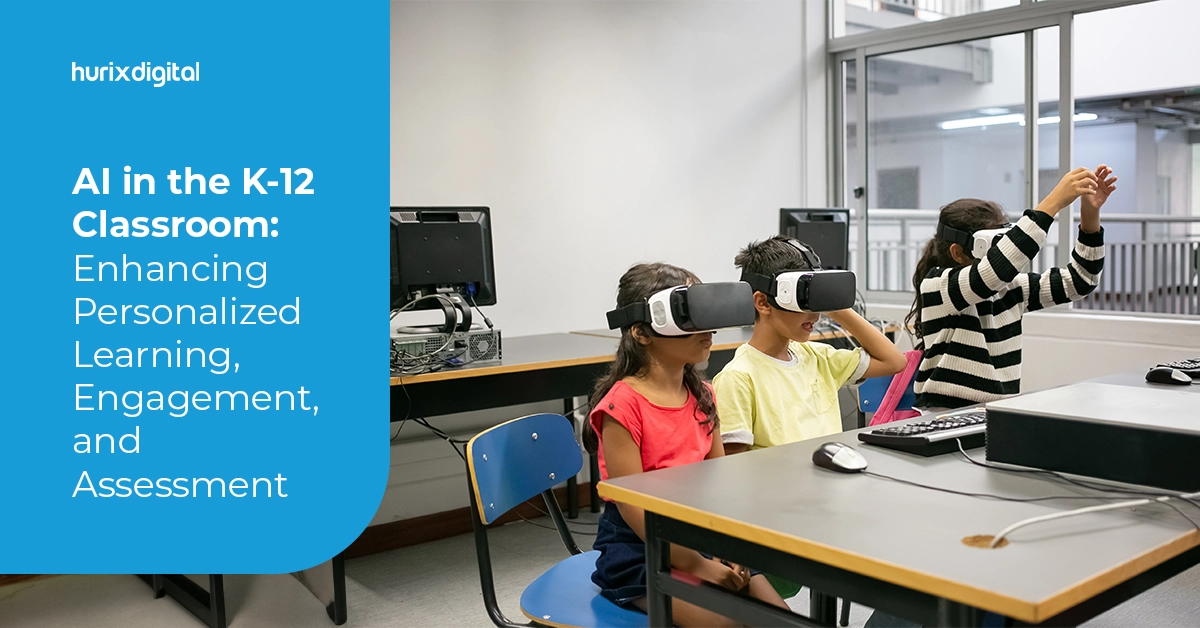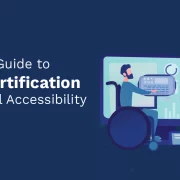
AI in the K-12 Classroom: Enhancing Personalized Learning, Engagement, and Assessment
Summary
Discover how AI technologies can be integrated into K12 classrooms to personalize learning, boost student engagement, and improve assessment processes.
Artificial intelligence, or AI, is one of the most disruptive and innovative technologies of our time. It has the potential to revolutionize various industries and sectors, from healthcare to finance to entertainment. However, one pivotal domain that merits exploration is education, particularly its impact on the K-12 classroom environment.
In this post, we will explore different ways AI can elevate the K-12 classroom experience by introducing personalized learning, boosting engagement, and revolutionizing assessment methods. Additionally, we will highlight the numerous advantages that AI brings to the field of education. Read on!
Table of Contents:
- What is AI in Education?
- How Can AI Enhance Personalized Learning in the K-12 Classroom?
- How Can AI Boost Engagement and Motivation in the K-12 Classroom?
- How Does AI Improve Assessment and Feedback in the K-12 Classroom?
- Conclusion
What is AI in Education?
AI is a broad term that encompasses various technologies and applications, such as machine learning, natural language processing, computer vision, speech recognition, and chatbots.
These technologies enable machines to learn from data, understand human language, recognize images and sounds, interact with humans, and generate outputs.
AI in education can be used to perform various tasks, such as:
1. Content Creation
Based on the curriculum, learning objectives, and student preferences, K-12 classroom AI integration can help create and curate educational content, such as textbooks, videos, quizzes, and games.
2. Content Delivery
Various channels and formats, such as online platforms, mobile apps, virtual reality, and augmented reality, can be used by AI to help deliver educational content to students.
3. Content Assessment
The learning outcomes and progress of each student, such as their knowledge, skills, and competencies, can be assessed by AI, and feedback and guidance can be provided.
4. Content Analysis
AI can help analyze educational content and its impacts, such as its quality, effectiveness, and engagement, and provide insights and suggestions for improvement.
Also Read: Developing K-12 Education Guidelines for Artificial Intelligence
How Can AI Enhance Personalized Learning in the K-12 Classroom?
Personalized learning is a student-centered approach that tailors the learning experience to the individual needs, preferences, and goals of each student. It can improve student outcomes, motivation, and satisfaction, as well as reduce dropout rates and achievement gaps.
However, personalized learning is not easy to implement in the traditional K-12 classroom, where teachers have to deal with large and diverse groups of students with limited time and resources.
Personalized learning with AI can help overcome this challenge by:
1. Creating Personalized Learning Paths
According to each student’s prior knowledge, skills, and competencies, as well as their learning objectives, preferences, and pace, AI-assisted learning can help create customized and adaptive learning paths. The performance and progress of the student can also be monitored and updated with AI.
2. Providing Personalized Support
AI can help provide Personalised and timely support to each student, such as feedback, guidance, hints, and explanations, based on their learning needs and difficulties. It can also help provide Personalised and positive reinforcement, such as praise, rewards, and badges, based on their learning achievements and milestones.
3. Offering Personalized Choices
By using artificial intelligence, each student will be able to choose from a range of options based on their interests and goals, such as the type, format, and difficulty of the educational material, as well as the mode, time, and place for learning. Depending on their learning interests and goals, AI can also assist with providing games, puzzles, and projects tailored to their needs and interests.
How Can AI Boost Engagement and Motivation in the K-12 Classroom?
Engagement and motivation are key factors that influence the learning process and outcomes of students. A student’s engagement in a learning activity refers to their attention, interest, and involvement, while motivation refers to their desire, willingness, and effort.
However, engagement and motivation are often low in the traditional K-12 classroom, where students have to follow a one-size-fits-all curriculum with passive and boring methods of instruction and assessment.
AI can help overcome this challenge and boost engagement and motivation in the K-12 classroom by:
1. Making Learning Fun and Interactive
AI-powered education solutions can help make learning fun and interactive by using gamification, storytelling, and social elements, such as points, levels, badges, leaderboards, avatars, narratives, and peer interactions.
It can also help make learning immersive and realistic by using virtual reality and augmented reality, which can create simulated and enhanced environments for learning.
2. Making Learning Relevant and Meaningful
By utilizing real-world examples, scenarios, and problems, that are relevant to the student’s interests, needs, and goals, AI can help make learning relevant and meaningful. The use of data and analytics based on a student’s background, preferences, and performance can also help AI make learning contextual and personalized.
3. Making Learning Challenging and Rewarding
To make learning challenging and rewarding, artificial intelligence can use adaptive and dynamic methods that adjust the difficulty and complexity of the learning content and activity based on the level and progress of the student.
Furthermore, AI can be used to provide students with learning feedback and recognition through timely and constructive methods, providing them with information, guidance, praise, and rewards, as well as information and guidance.
How Does AI Improve Assessment and Feedback in the K-12 Classroom?
Assessment and feedback are often ineffective and inefficient in the traditional K -12 classroom, where teachers have to rely on standardized and summative tests that are infrequent, time-consuming, and stressful and provide limited and delayed information and guidance.
AI in K-12 classrooms can help overcome this challenge and improve assessment and feedback by:
1. Providing Continuous and Formative Assessment
Artificial intelligence for assessment can monitor and measure the learning outcomes and progress of each student throughout the learning process rather than at the end of it.
It can also help provide adaptive and dynamic assessments that adjust the type and difficulty of the assessment content and activity based on the student’s level and progress.
2. Providing Immediate and Actionable Feedback
Students can benefit from immediate, actionable feedback as soon as they complete an assessment activity rather than waiting for a long time to receive it.
In addition to providing tailored and constructive feedback, AI can also help provide specific and relevant information and guidance based on the student’s learning needs.
Also Read: AI-Powered Education: Revolutionizing K-12 Learning through Robotics and AI
Conclusion
The advantages of integrating AI into K-12 edTech are evident—personalized learning heightened engagement, and improved assessment. Yet, incorporating AI in your K-12 classroom demands more than enthusiasm; it requires expertise, resources, and dedicated support.
This is where Hurix Digital steps in. As a leading provider of digital education solutions, we specialize in designing, developing, and delivering AI-powered educational solutions tailored for K-12 classrooms. We understand that navigating the complexities of AI implementation can be challenging, but with our experience and commitment, we make the integration seamless.

Senior Vice President – Business Development
Over 25 years of experience in the edtech and workforce learning industry with strong skills in Business Development, Customer Relationship Management (CRM) and Strategy.





















